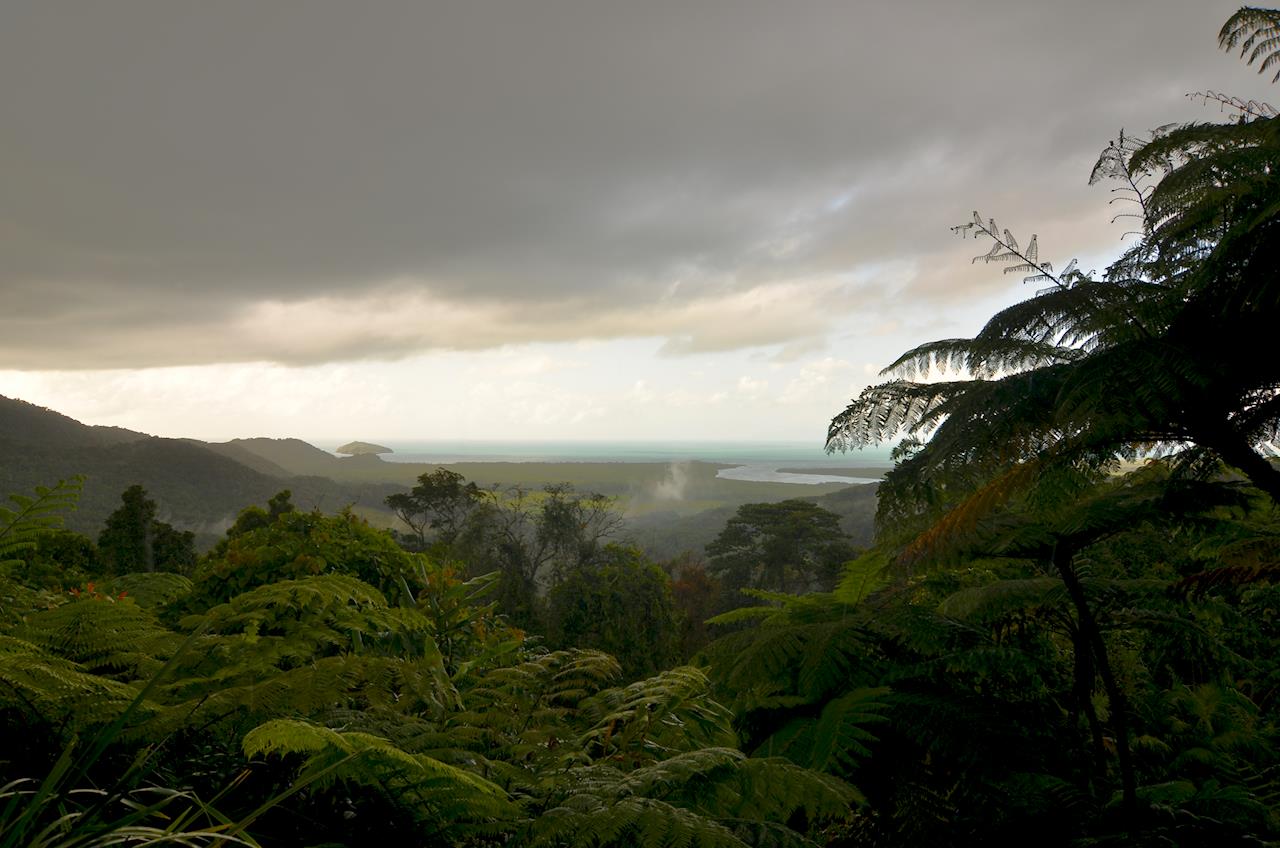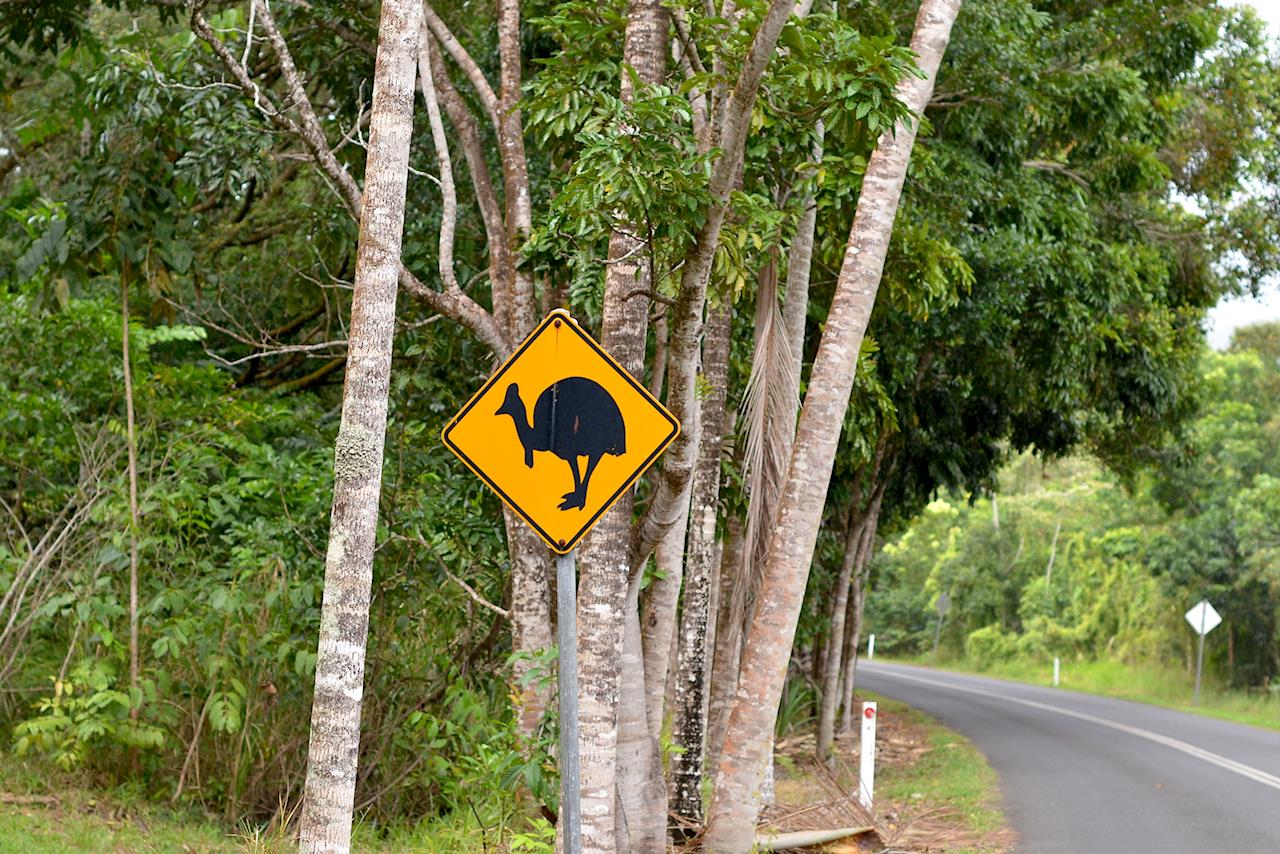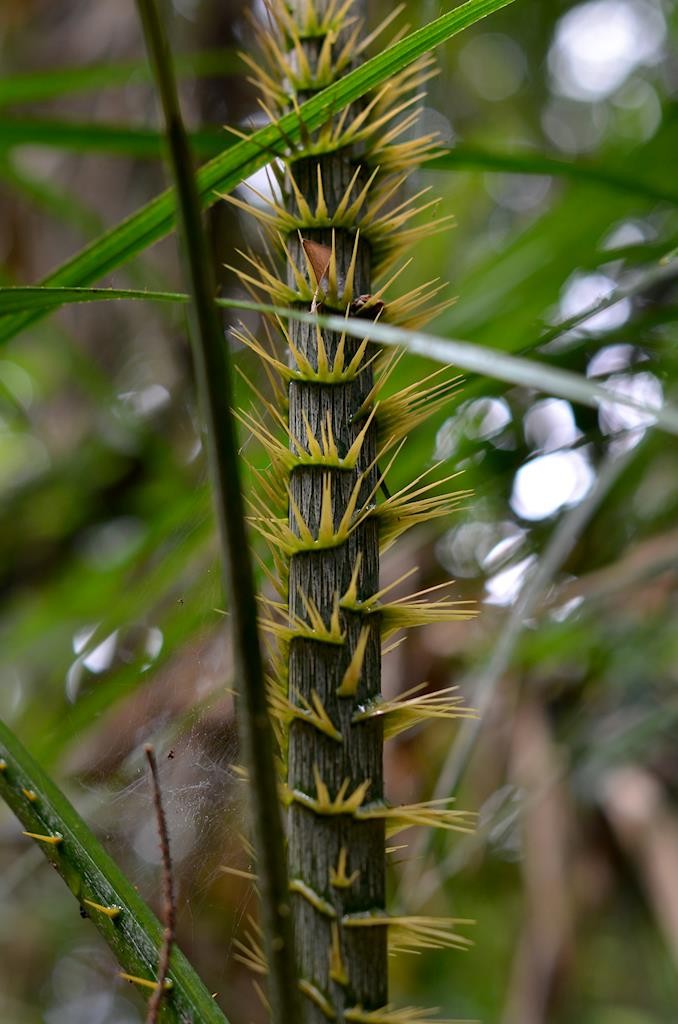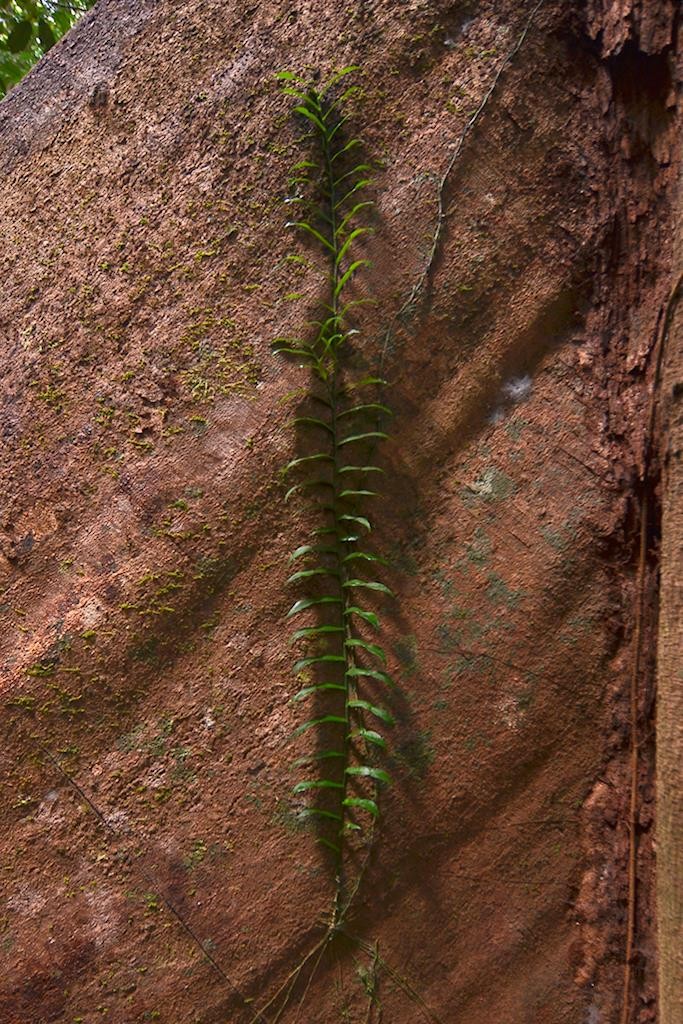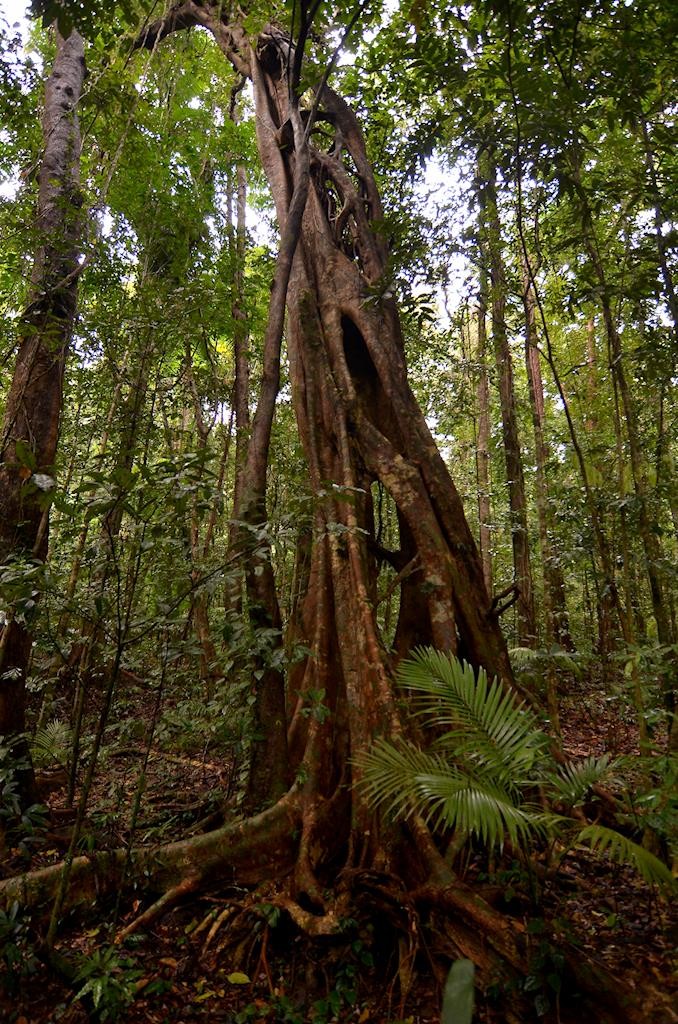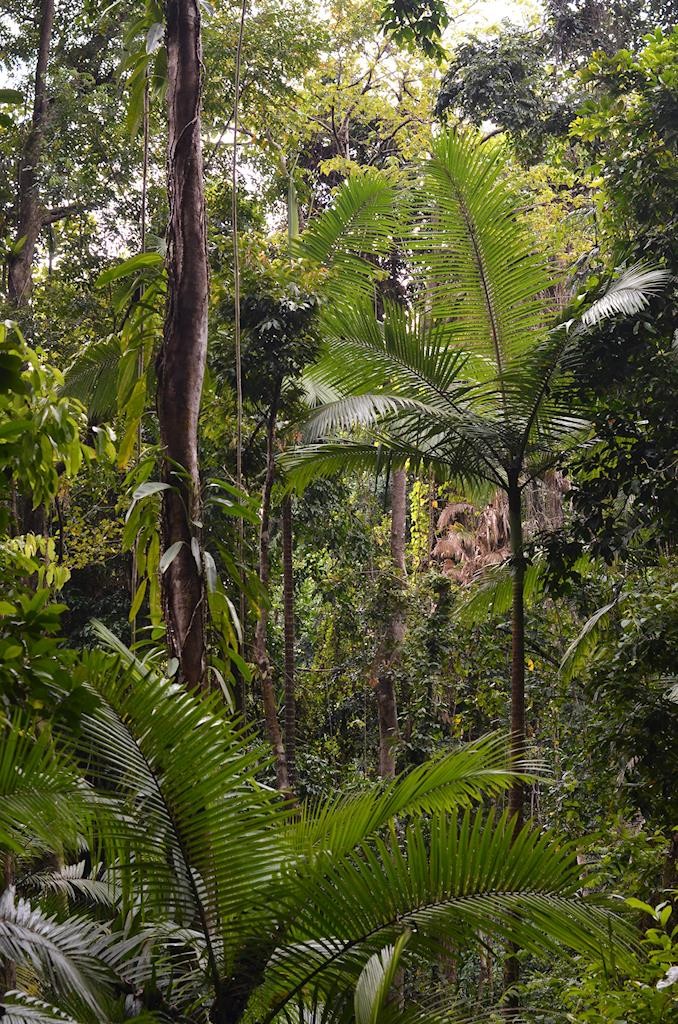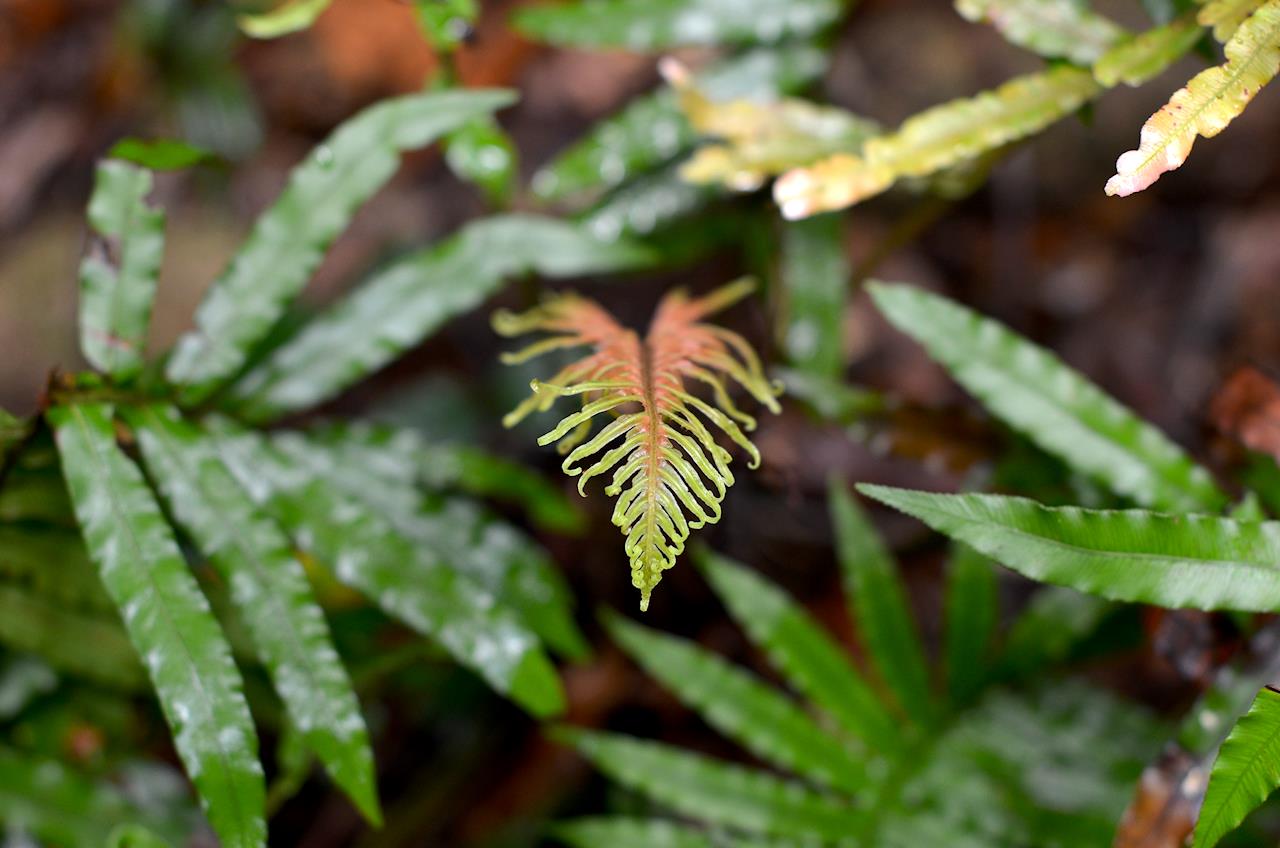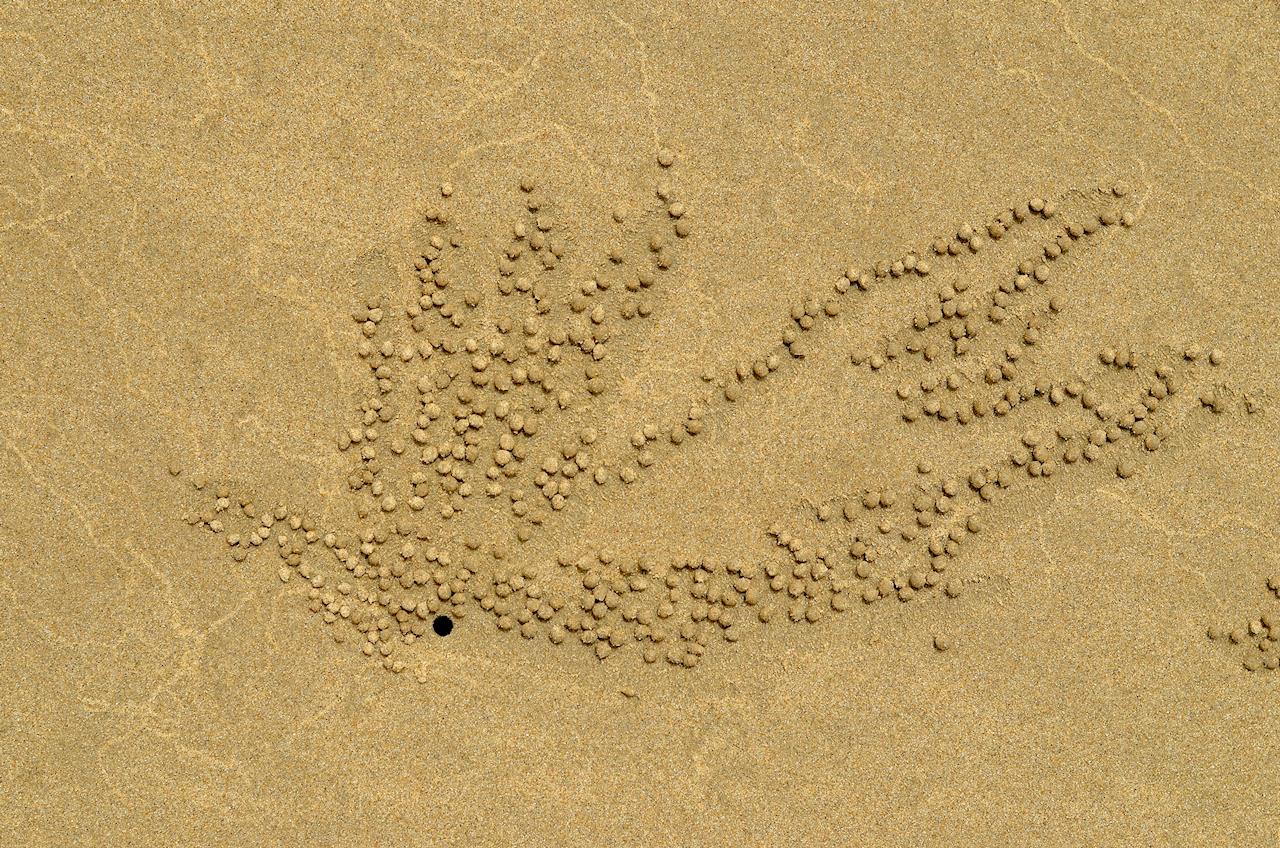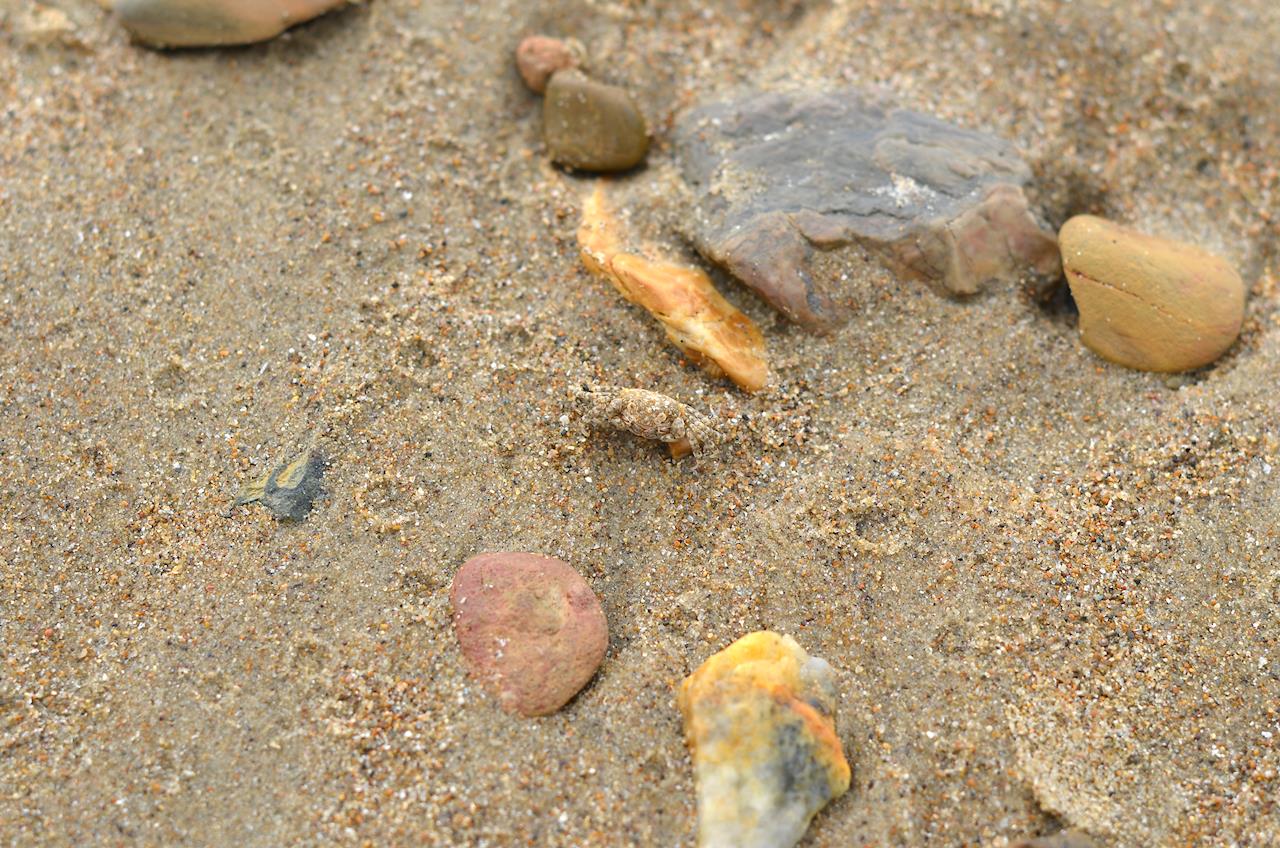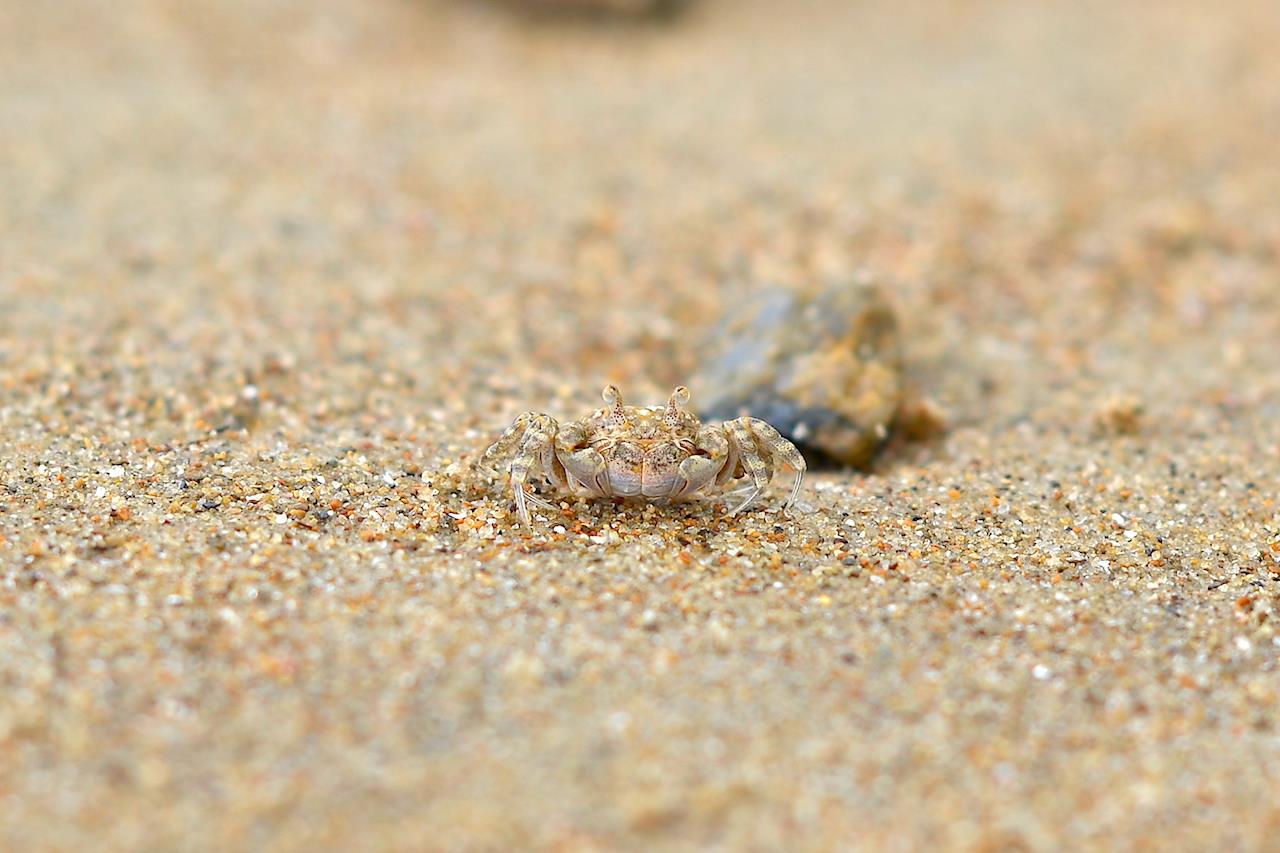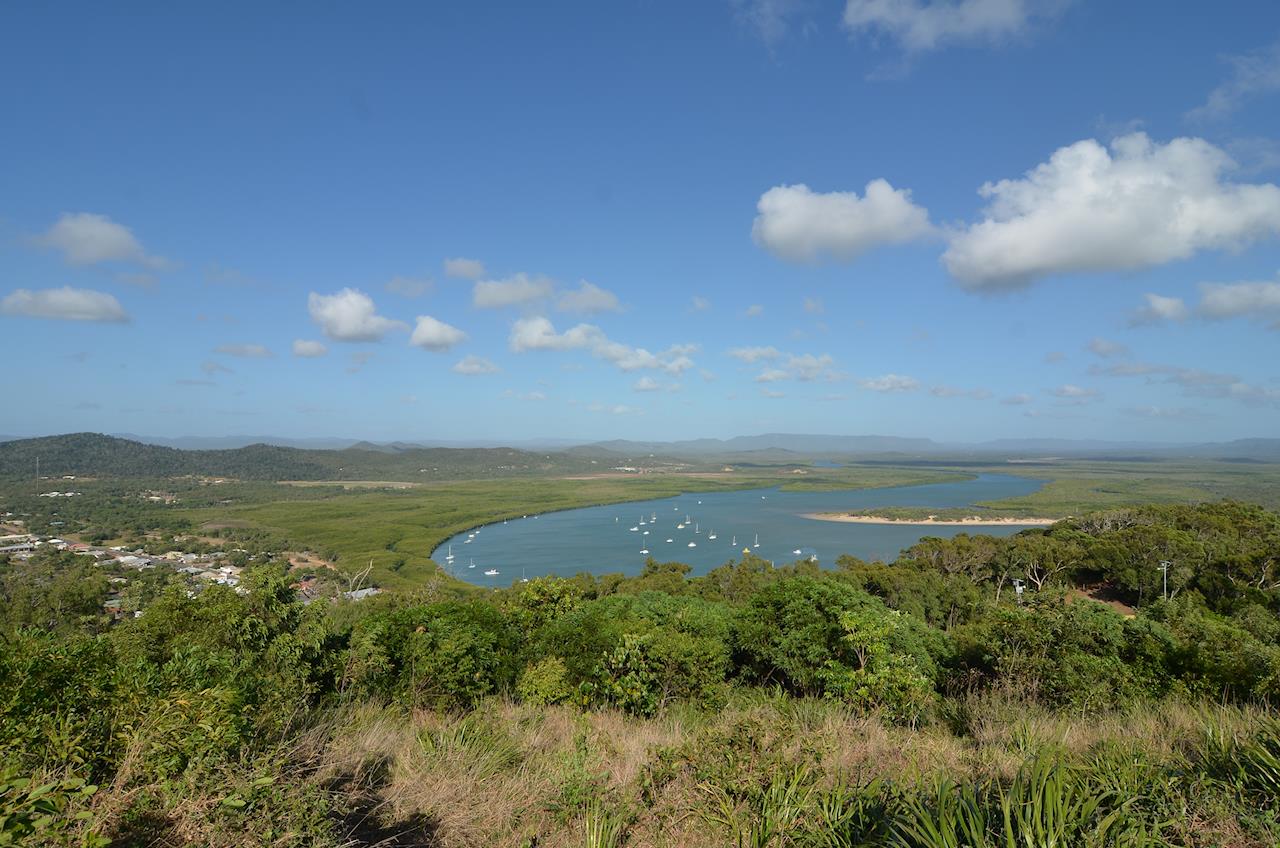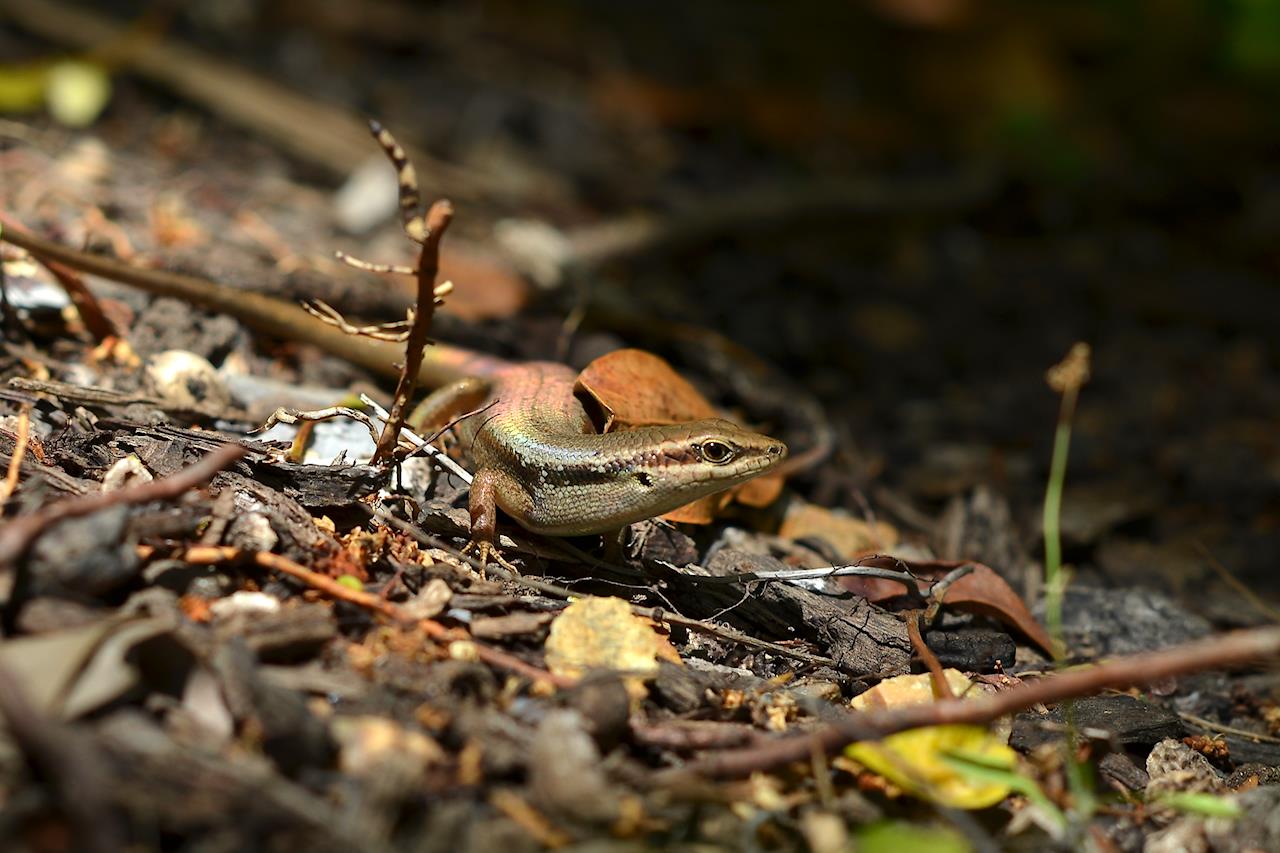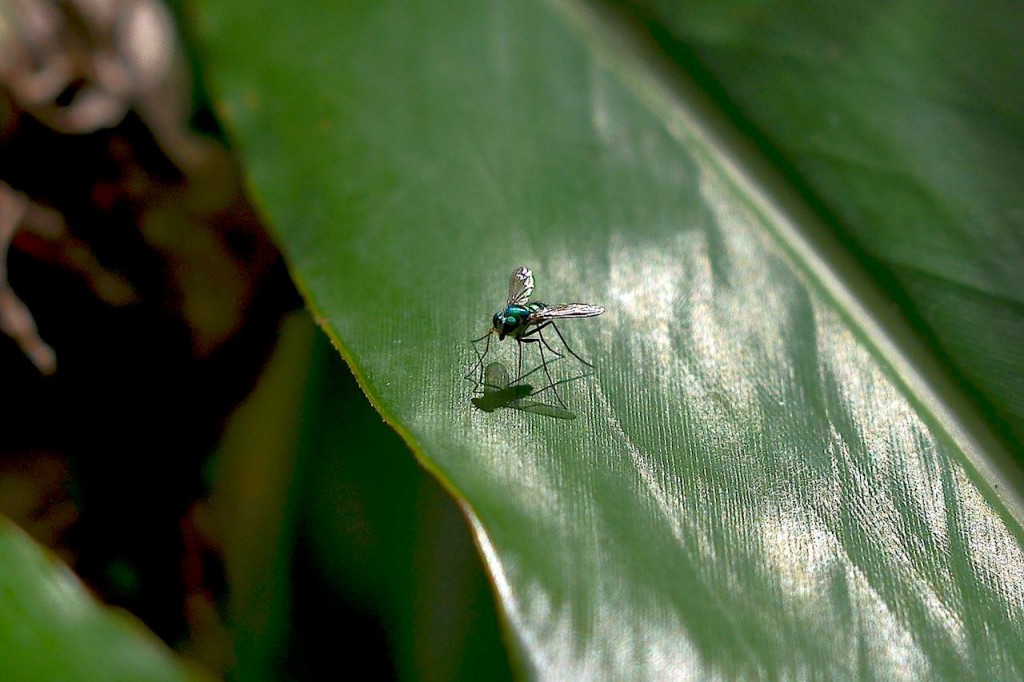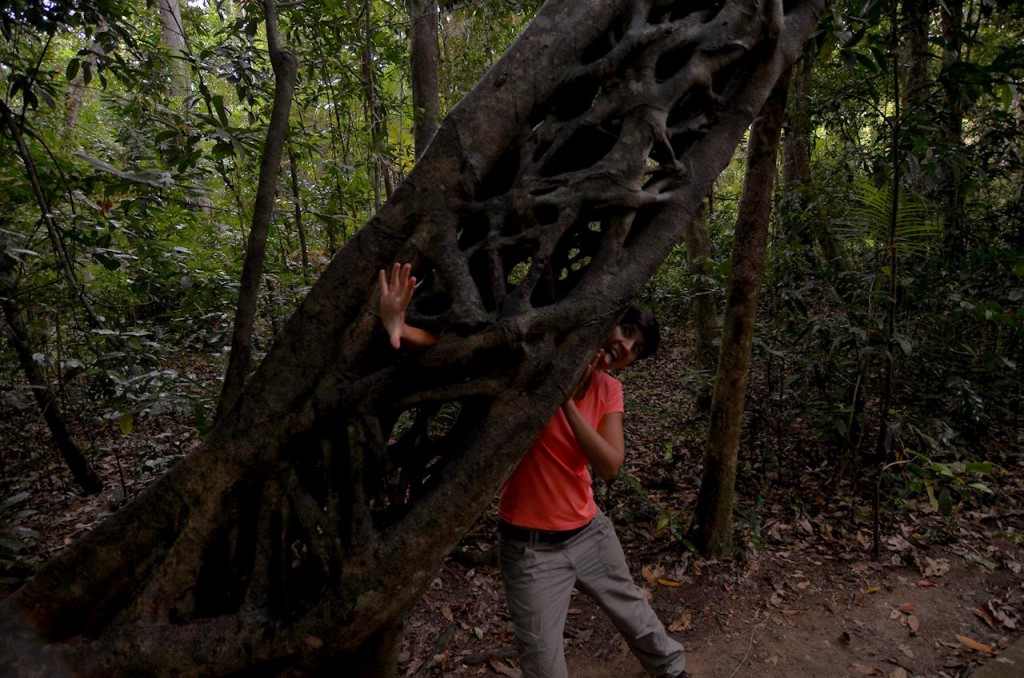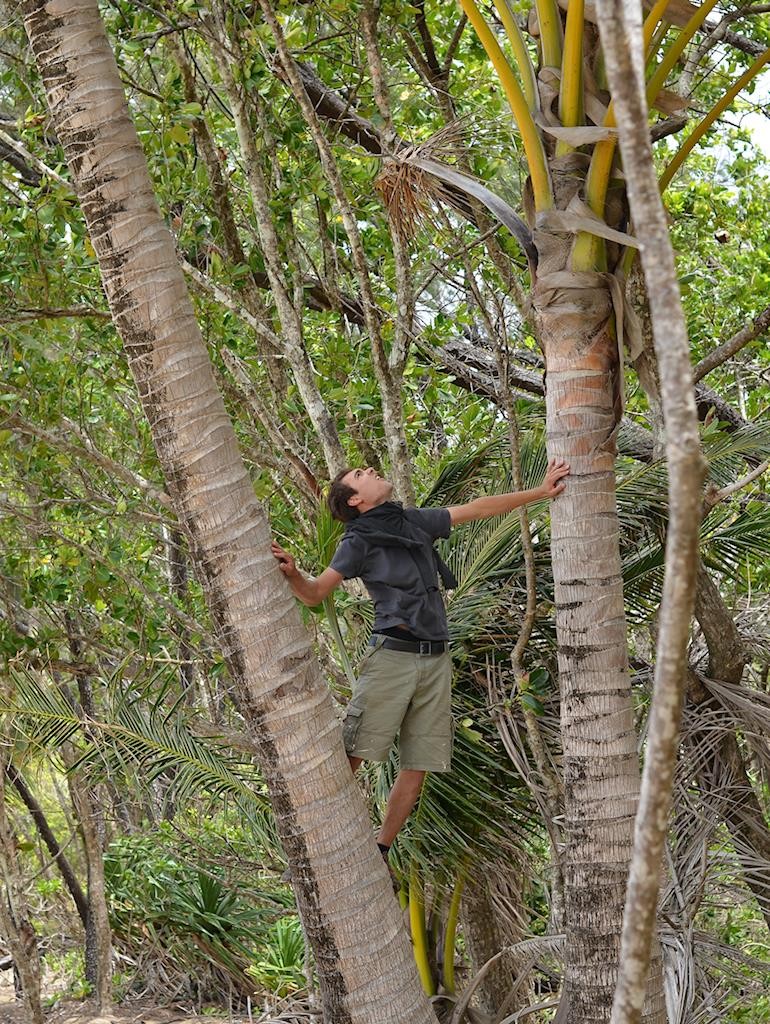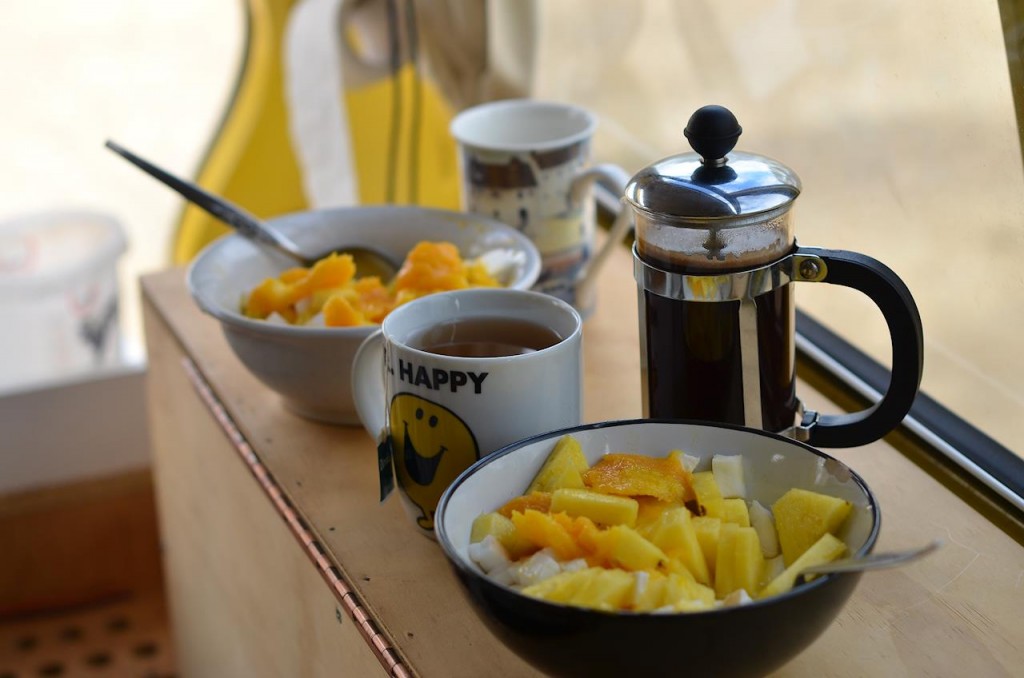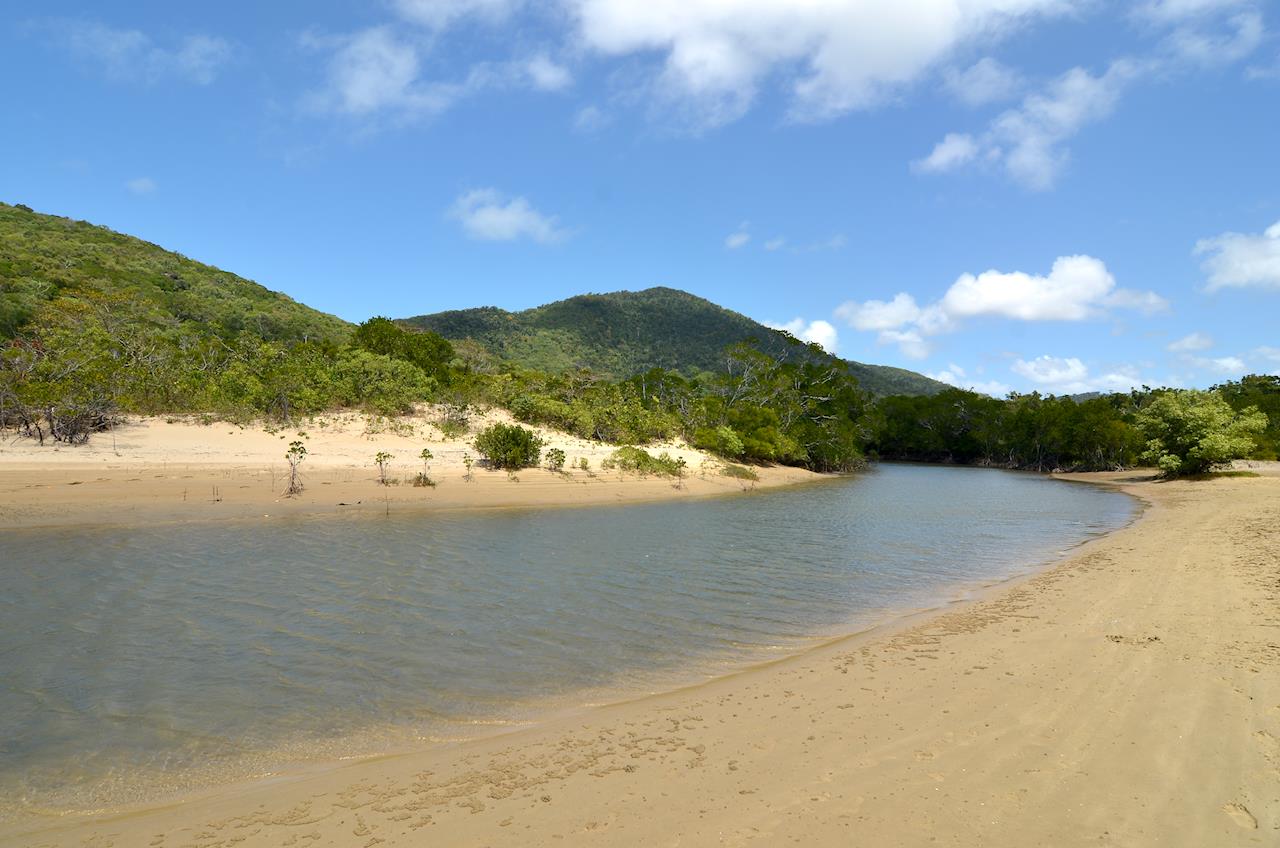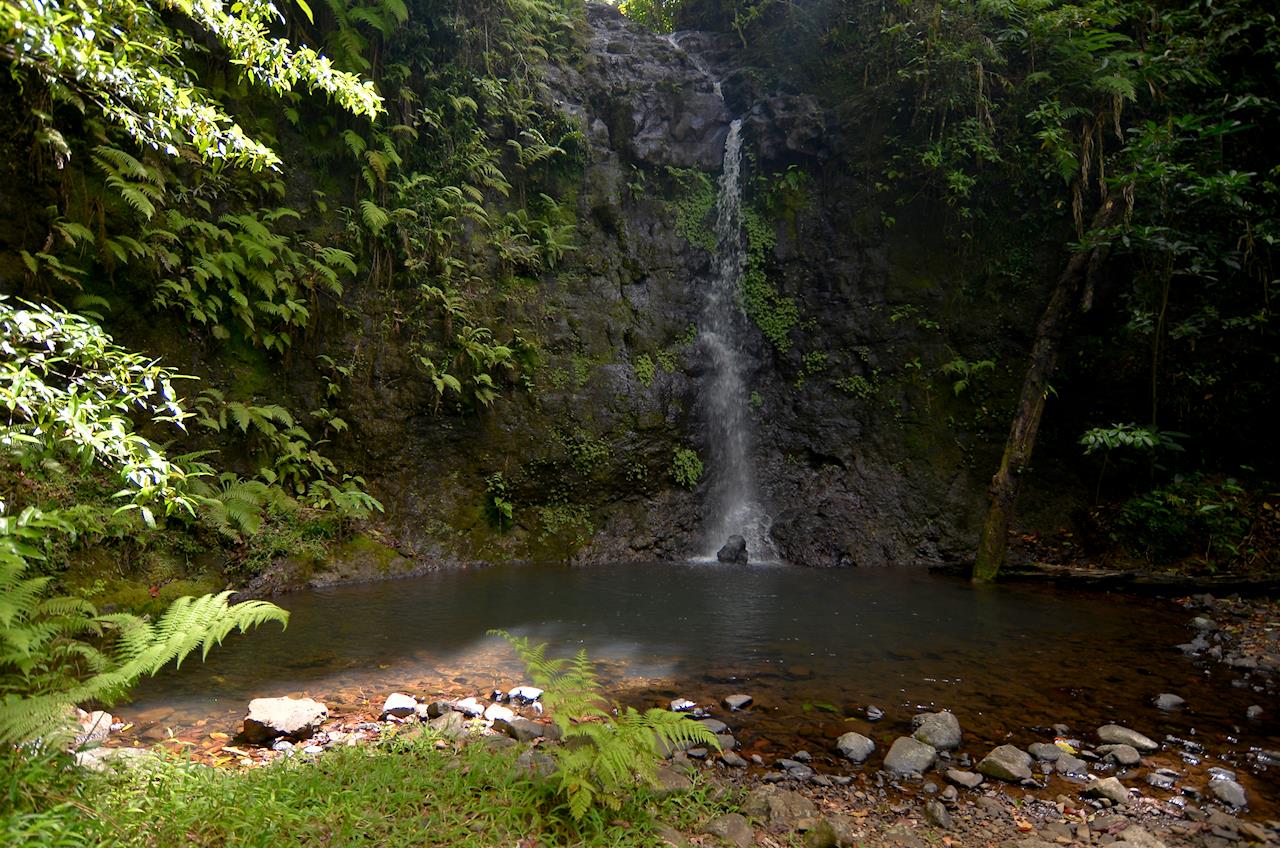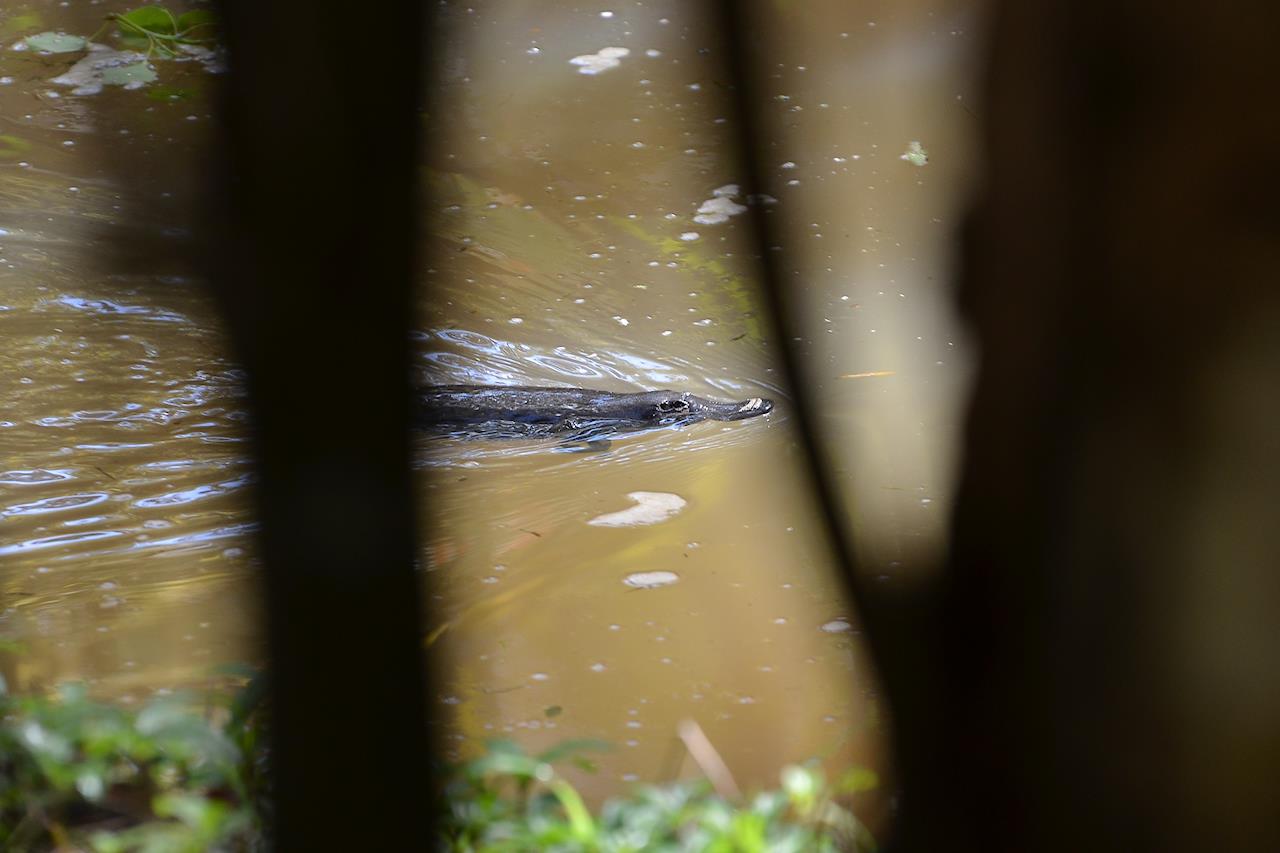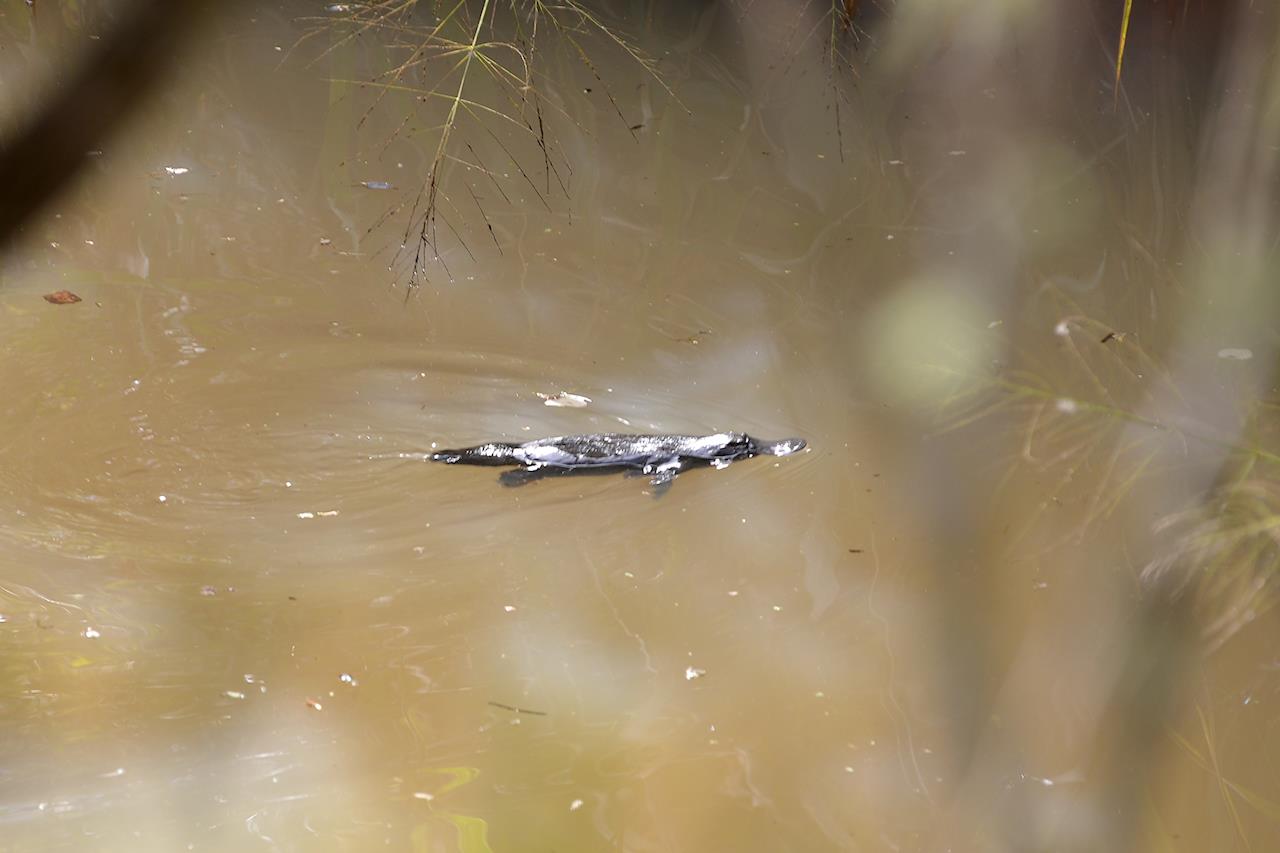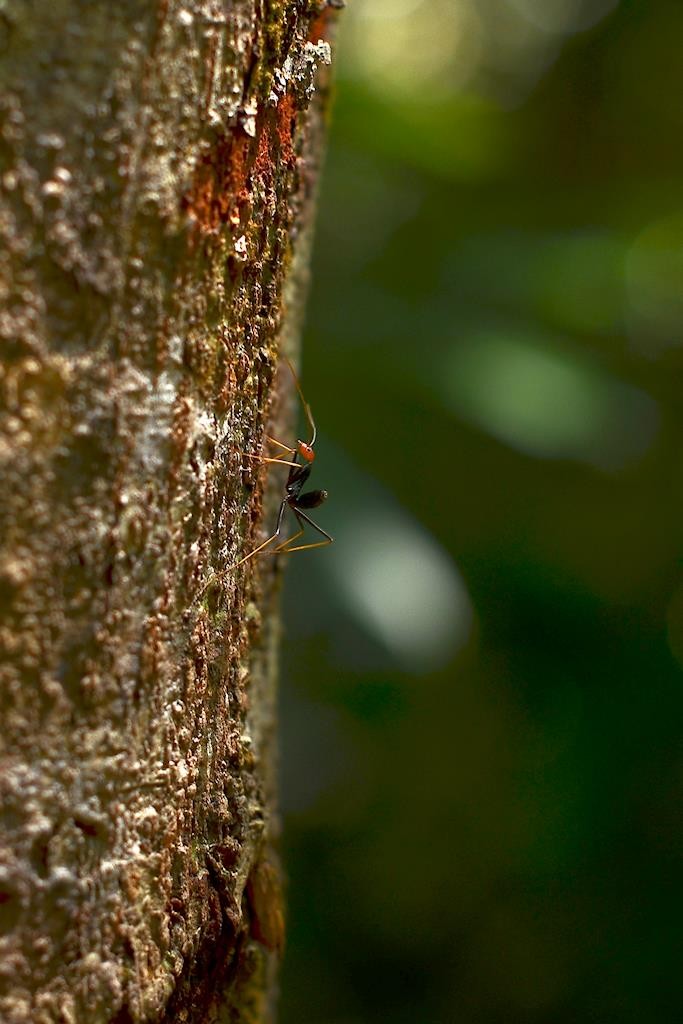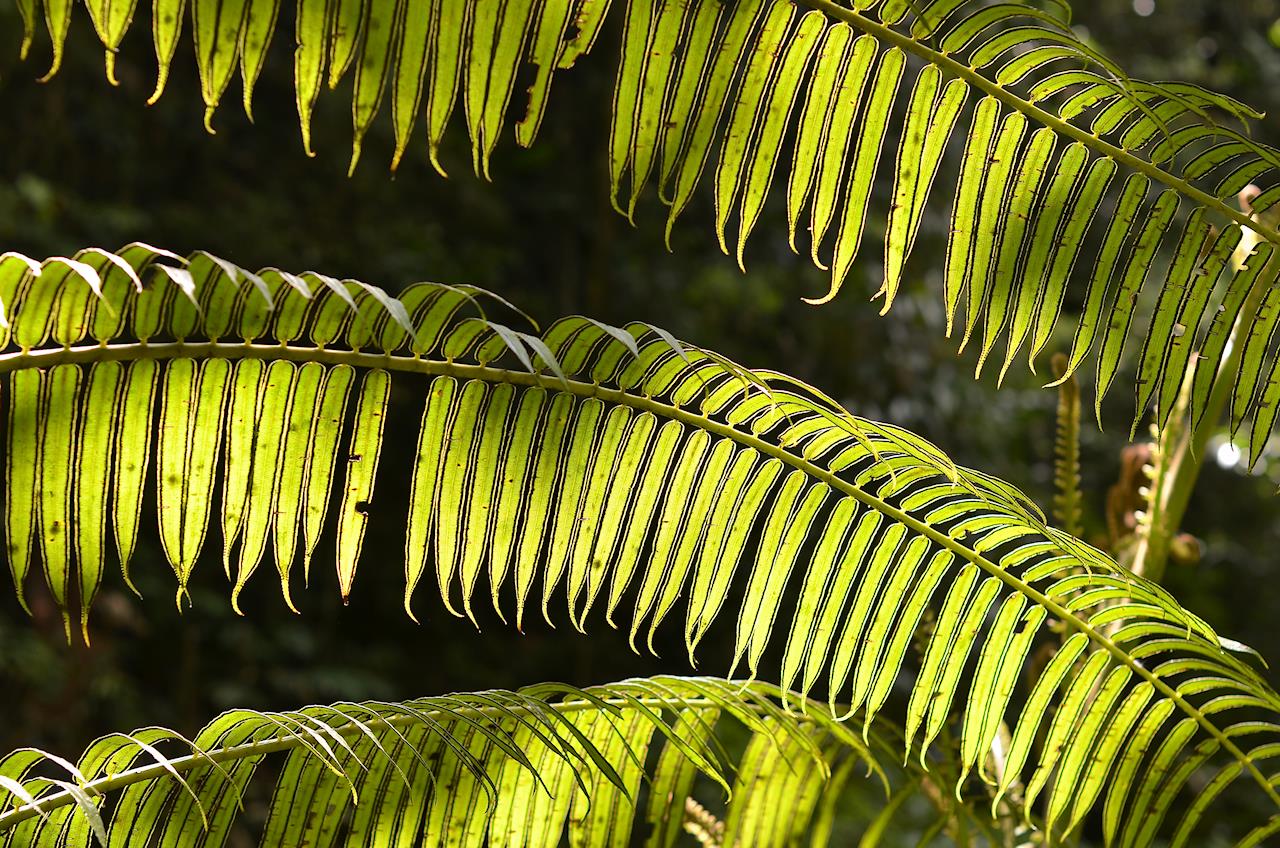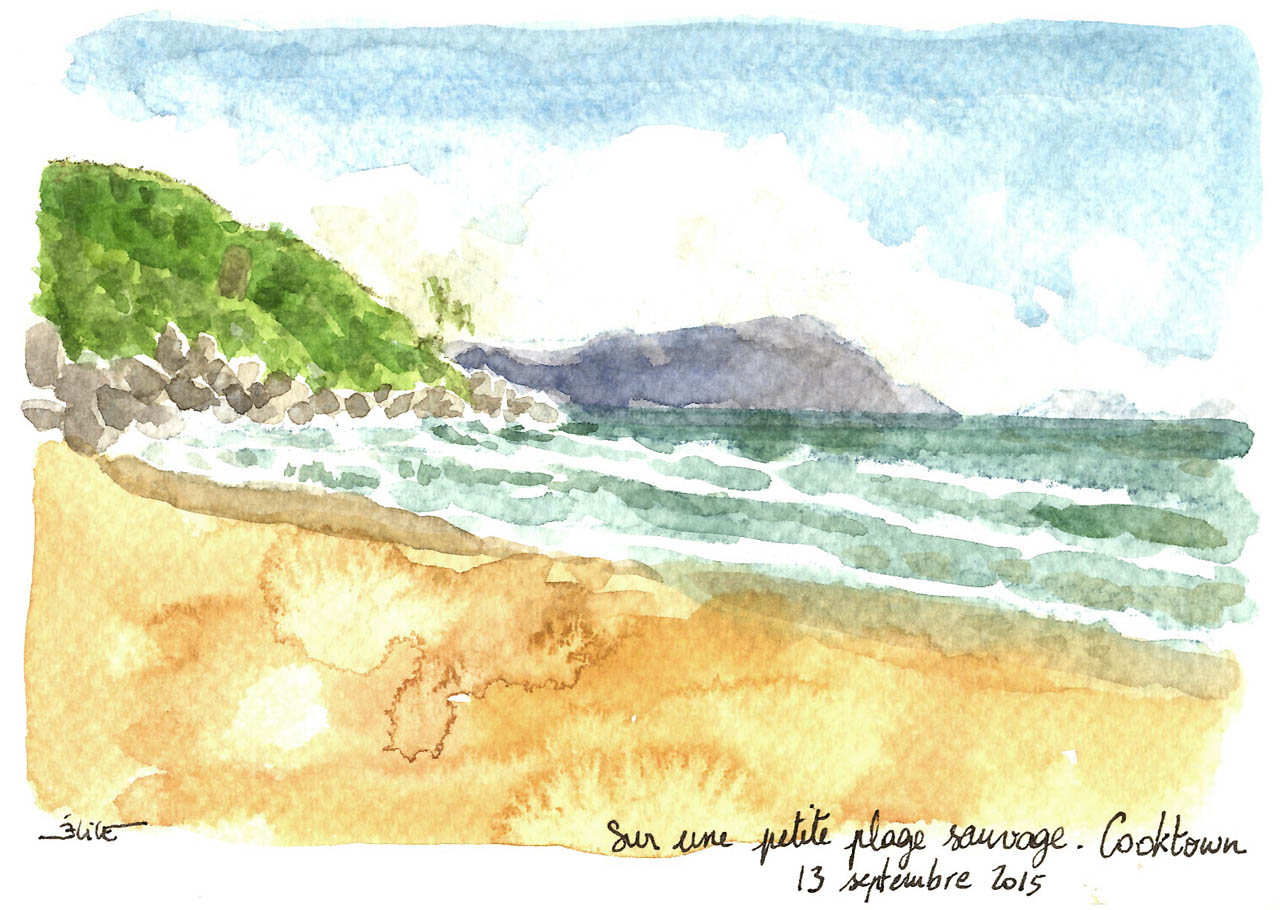
Hunt The Cassowary
Heading North and Daintree forest. The road follows the jagged coast and offers us several beautiful clear viewpoints. We pass fields of sugar-cane, crossing at times the little train that transports the crops. In the distance mist blunts the silhouette of mountains. Everything not taken over by man is covered with thick vegetation, humid forest or tropical jungle, right up to the edges of long deserted beaches. We could be in the Caribbean.
This luxuriant vegetation hosts a rare large prehistoric-looking bird : the Cassowary. This endemic species is disappearing but with a little luck and patience, we may see one of the last survivors.
Here we are then off on the track of the Cassowary. We get up early to be the first to tramp the tracks, camera ready in case it is needed… To hear nature awake, to enjoy the beautiful morning light. This fellow is really timid, and in the few days we spend here we only see droppings and footprints in the sand.
In default of seeing the flashy plumage of this weird bird we treat ourselves to walks in the jungle. The biggest trees spread their foliage like an umbrella, keeping in the shade and humidity of the forest’s interior. The ground, soft carpet of mosses, dead leaves, enriches itself with the passage of seasons. Every hollow, every crevice collects a little water, a littler soil and becomes the pretext for a new life. The plants intertwine, mingling together, growing over one another and choking one another in an eternal race to the light. It is so different to our woods at home, so much bigger, beyond measure. Whenever we stop and look we find a new plant, a new flower, a new shape, a new insect.
On the beach we are intrigued by an amazing sight : little balls of sand arranged around a hole creating the same sort of pattern that one sees in certain Aboriginal paintings.
We spend a while, bottoms on the sand, eyes on the hole, curious to discover the artist. In vain. We try another hole without success. It’s only later that we catch the culprit. Besides being timid, he’s well equipped on the camouflage side.
It’s a burrowing crab. OK but that does not explain the balls ?! We solved the mystery. The sand does not have time to accumulate, the wind shifts the small piles, as they roll they become the beautiful tiny rounded ball and arrange themselves randomly around the hole. Moreover, we quickly realise that this does not work with the big crabs. Around their hole there is just a big pile of sand.
North of Cape Tribulation the road is too rough to risk with our van. It would be daft to lose out now when we are selling in a few days time. We detour inland to go back to Cooktown. We see again the arid countryside we know so well. Some rickety cows wander by the roadside.
In the middle of the roadway a bloke is making signs for us to stop. Slowing down we could see a van upside-down off the road. He asked if we were going to Cooktown and if we could drop off there a couple of French people who had had an accident. There are not 4 seats in the van, but with one on the couch we could manage.
So that’s how we met Stéphane and Brigitte : just arrives in Australia, first day in their hired van. They are a bit shaken up, but happily nothing serious. “Hang on Stéphane, take this paper towel to wipe the blood that is running down your arm…” (Because we have buyers for the van and want to spare them the crime scene…)
The van is fully loaded, we go at 60 KPH. After a detour via the police station and several calls for the insurance, we end the evening in a little restaurant, telling our stories over fish and chips and exchanging ideas over glasses on white wine. Our two companions are really relaxed considering the circumstances, we have a super evening. They are just about the same age as our parents, so they sympathised with them when they learned we were spending two Christmases in a row far from our families. Unworthy children, they told us!
We took them to their hotel before finding a more or less official spot in the town of Cooktown to spend the night.
Captain Cook landed here in 1770 to make repairs to his boat the Endeavour. During that stay the scientist and naturalist on the crew recorded over 200 new species of plants. Like us, we imagine them having so much fun discovering this new environment ! The botanic garden wild and luxuriant gives a good insight into the local flora. We even come across an inoffensive little snake and some multicoloured lizards.
But what we love the most is when Lady Nature offers us something to taste. Coconuts gathered on the beach and under-ripe mangos devoured in the shade of a mango tree. It’s juicy, fresh and like a taste of holidays under palms.
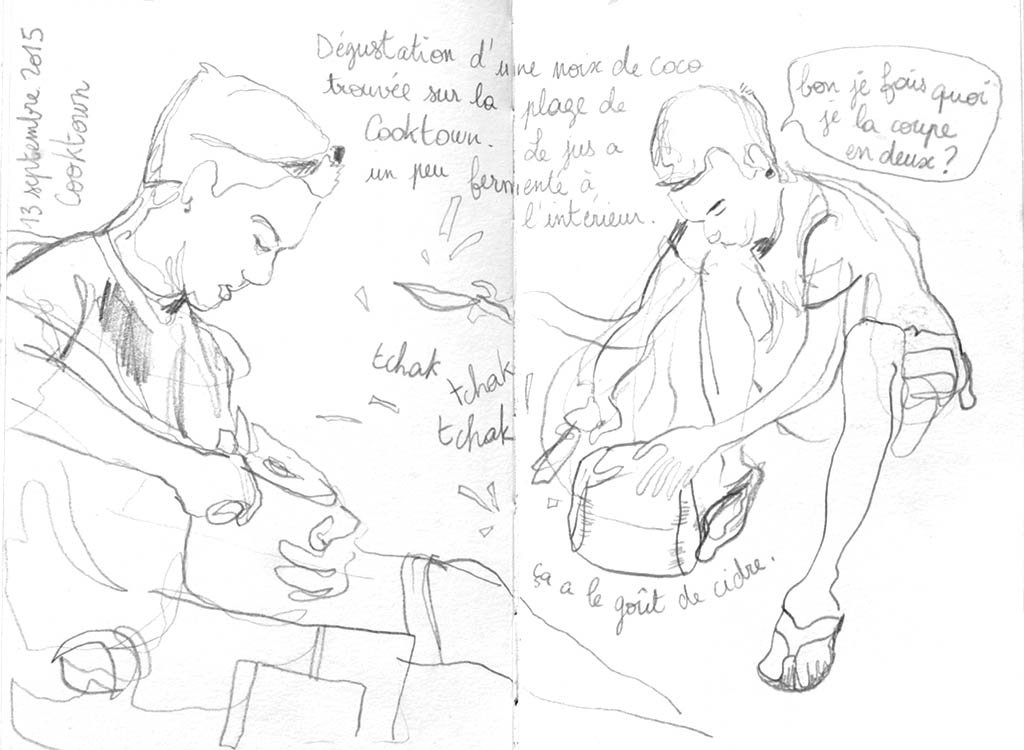
Tasting a coconut found on Cooktown beach. The juice inside had fermented a bit… OK what do I do ? Cut it in half ?
We take up the road South again, to discover the Tablelands, a region inland from Cairns. It is cooler here, and much more humid. The vegetation is impenetrable and very undulating. It’s a countryside of waterfalls. Atherton, Milla Milla. We have great walks. Our patience is rewarded this time by a little animal which finally shows us its funny beak… Mr Platypus !
These 10 days of road trip around Cairns let us gently realise that the adventure on the Yellow Van ends there. It is time to give up driving. We find Alex and Sarah in the supermarket parking lot. We fill out papers, give them our last advice, and we go off towards the bus stop, our bags still too heavy, crammed on our back, didgeridoos on bandoliers.
We are split between sadness at being separated from our comfortable travel companion that we cared for with so much love. And at the same time we are happy to break the routine, drop the not very original and not always positive image of French Backpacker travelling in their van and refloat our finances to set off on new adventures.
We get ourselves two good beers each, one to celebrate the sale of the van and the other to rebuild morale, and we settle ourselves on the edge of the Cairns lagoon. For this evening, this first night without the van we decide to sleep in the green spaces of the bank a bit away from the center of the town. It did not seem necessary to pay for an hotel as we are catching the bus at 5.00 AM tomorrow. We are quite comfortable up to when the automatic watering starts up. Wake with a jump. Reflexly grab our big bags and the two didgeridoos before running for shelter. We stay upright a few minutes, a bit giddy, time to realise what just happened. We finish the night on the other side of the cycle-track, on the beach as high as possible because the tide is coming in.
The beginning of a new adventure, we said…
Translated by Graham
